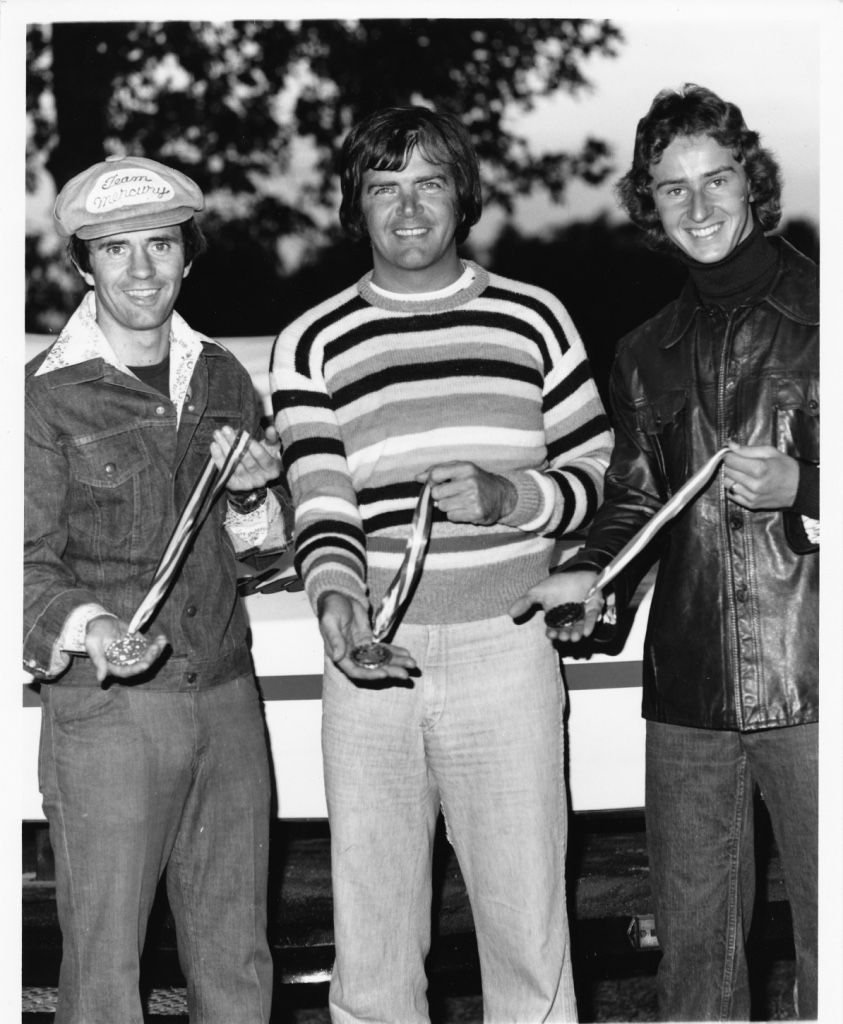Inside Powerboat Racing with Canadian Icon Mark Rotharmel
- Bill Jennings

- Jun 13, 2023
- 4 min read
Updated: Jun 14, 2023

In both auto racing and boat racing, there are numerous different classes. The rules for each class are established in such a way to make for fair and close competition. When it comes to cars, Formula 1 is generally acknowledged to be the top class. The closest equivalent for boats would be F1H2O.
The boats in this class are 18' in length, weigh just over 1000 lbs, and are powered by 450 horsepower outboard motors. They can accelerate from a dead stop to 120 mph in under 8 seconds and have a top speed of close to 150 mph. As with an F1 car, they are a single seaters that make maximum use of aerodynamics, run on a course with both left and right turns, and race with a time difference between them measured in split seconds. To learn more about the realities of racing in the top class of powerboats, I visited my friend Mark Rotharmel.
Mark and I go back a long way. In fact, Mark was best man at my wedding.
Mark's record in boat racing speaks for itself -- 13 different race boats, 10 major championship titles, and 3 speed records. Like most world champs, he began at an early age, setting up a small course at his parents cottage and running his Checkmate against his father and anyone else who would challenge him. When he was only 17, he entered the official Canadian Boating Federation circuit as the youngest driver and began his career with a win.
Mark quickly moved up in classes and in the mid-70s was soon given a Mercury factory ride in an unlimited class tunnel boat. He would go on to win top Canadian for six years. When Mercury withdrew from factory sponsorship in 1979, Mark was snapped up by OMC and ran with Evinrude power in a world circuit.
Just like F1 cars, F1H2O boats start each race when signaled by starting lights and take off from a dead stop. Mark told me: "The 'LeMans type' start is always tricky because you have 20 boats in a row that accelerate away from the docks to the first turn together, with less than ten feet between them. Going into the first turn with all that traffic at 120 mph also makes for an interesting scenario."
To accomplish such turns, these boats have a special design. There are two sponsons, but unlike a catamaran, the inside of each sponson is vertical. This allows the outside of the sponson on the outside of a turn to slide up, but the inside of the inside sponson catches on the inside of the turn, causing the boat to literally hook around the corner without losing speed. Mark told me, "according to measurements taken, the sideways force can be up to 7 G's." That's 7 times the force of gravity working against your body, and your boat.
Tunnel boats achieve their remarkable high speeds by running with as little of the boat in the water as possible, with the intention being to reduce drag.
"Using trim and lift controls you can raise the bow of the boat to drive more air into the tunnel."
"This is fine," Mark told me, "until you either become too ambitious or take another boat wake the wrong way. Then you can experience the dreaded 'blow-over'."

Mark has 'blown-over' four times.
"It all happens so quickly that you really don't have time to be frightened."
Mark has been lucky with three blow-overs, but he did suffer some serious injuries in a Sacramento, California race. After that incident, Mark became only the seventh person to decide to use a harness in his tunnel boat, albeit even with some trepidations.
"While a harness reduces impact injury, you could find yourself strapped into a boat that is inverted and at the mercy of a rescue team." It's not as straightforward as it sounds.

While running the world F1H2O tour in 1985, Mark raced in nine countries -- France, Belgium, Stockholm, Sweden, Germany, Italy, Finland, the USA and Canada. I asked what he considered to be his scariest racing experience and he told me about a race in Pittsburg, PA. Like most of the F1H2O races, it was held on a river in a major city. A bridge by Three Rivers Stadium crossed the course over the Ohio River.
"I was in my qualifying run when the steering disengaged. The boat hooked and headed straight for a concrete bridge abutment. Thankfully the boat had slowed considerably before I hit it. Then, in the race, the engine quit, leaving me dead in the water under the narrow section of the same bridge. I was sure one of the boats flying past would run into me, but while there were some close calls, they all made it past."
In 1986, Mark and the F1H2O racers thrilled over 300,000 spectators at Expo '86 in Vancouver, Canada. The race was the largest paid attendance of any boat race in Canada and Mark spent much of the weekend signing autographs for his fans.
Mark has long retired from racing and can be found today working around his cottage in the Kawartha Lakes region of Ontario. Of course he is never far from boating, having conducted dozens of boat tests for national publications, hosted several television shows, and still owns five personal boats.
Boat racing has long been considered more exciting to watch than auto racing because of the unpredictable surfaces found on water, which add a third dimension that even a skilled driver cannot always overcome. I asked Mark why powerboat racing has never achieved the spectator base that car racing has and Mark noted that most people can relate to car racing because they have a car, but not nearly as many people have a boat. It makes sense.
Looking back, Mark noted two facts about racing: "Accelerating to top speed in a boat is one thing, but holding it there is very different. Put another way, when you are going fast but not racing, you don't have to run on the ragged edge the entire time." We should all keep this in mind when cruising our local waters. #culture




























Comments